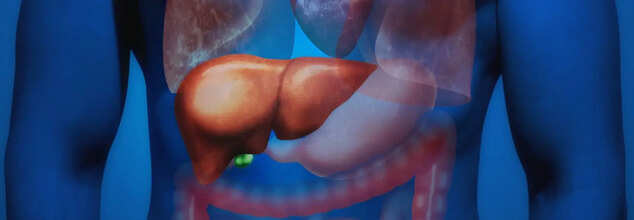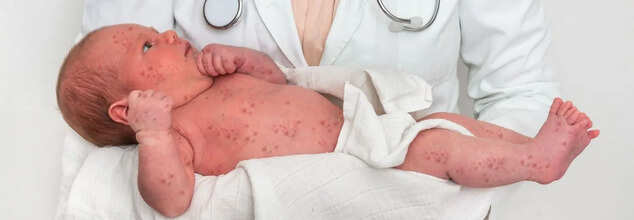- Health Conditions A-Z
- Health & Wellness
- Nutrition
- Fitness
- Health News
- Ayurveda
- Videos
- Medicine A-Z
- Parenting
- Web Stories

Image Credit: Canva
Aging US Population At High Risk Of Dementia, Cases Expected To Double By 2060
The prevalence of dementia among the aging US population is much greater than estimated, according to new research that predicts a staggering rise in cases in the coming decades. A study published today in Nature Medicine reveals that risk of developing dementia after age 55 is more than 42%, underlining a burgeoning public health challenge.
A long-term, nearly 16,000-person study reveals that lifetime dementia risk is underestimated by about half. Of nearly 3,200 diagnosed cases of dementia between 1987 and 2020, an estimated overall lifetime risk is 42%. Lifetime risk was significantly higher in women (48%) than in men (35%), largely due to women's longer life expectancy.
The study also emphasizes disturbing racial group disparities. Blacks are more at risk of experiencing dementia, attributed to factors like genetic predispositions, socioeconomic inequalities, and lower access to health care.
The number of dementia cases, currently projected to increase annually by about 500,000 new diagnoses per year, is expected to quadruple to 1 million by 2060 as a direct result of the aging Baby Boomer population. By 2040, all Boomers will be over 75 and at the critical dementia-diagnosing age, where diagnoses peak.
Along with age, other factors further increase the risk:
- Genetics: APOE4 gene mutation is the major risk factor for Alzheimer's disease, which is the most common type of dementia.
- Chronic Conditions: The risk is compounded by high blood pressure, diabetes, and obesity.
- Lifestyle: An unhealthy diet, lack of exercise, and poor mental health are all modifiable contributors.
- Hearing loss: Researchers indicate that untreated deafness among aged individuals increases risks for dementia but only one third of the infected people use the hearing aids.
Why Women and Black Americans Face a Higher Chance of Dementia?
The study revealed the cumulative nature of structural inequality throughout a lifetime. The report indicates that compared to White Americans, black Americans are more susceptible to developing dementia and are more likely to have an earlier onset of the disorder. Researchers further attribute these disparities to some long-standing issues in the form of systemic problems associated with inadequate education, nutrition, and healthcare provision.
To address this, public health efforts should focus on enhancing early-life conditions and addressing racial health inequities. For example, improved educational programs and nutrition in disadvantaged communities could reduce cognitive decline later in life.
Also Read: THIS Test Can Predict Your Dementia Risk
How Can Early Detection and Diagnosis Improve Dementia Outcomes?
While age and genetics are non-modifiable, lifestyle changes can significantly contribute to reducing the risk of dementia. Experts point out several preventive measures:
Vascular conditions like hypertension and diabetes must be managed. Regular exercise improves cardiovascular and brain health. A nutrient-rich diet, including foods like leafy greens and omega-3 fatty acids, supports cognitive function. Activities that challenge the brain, such as puzzles and reading, are linked to reduced dementia risk.
It also requires early diagnosis and intervention. New diagnostic tools are now being developed, which include biomarkers such as beta-amyloid and tau proteins that can be identified for the earliest signs of Alzheimer's disease. Such advancements open avenues to new therapies in slowing down disease progression.
Studies reveal that hearing loss is a modifiable risk factor, and unaddressed hearing impairments are strongly associated with an increased risk of dementia. However, fewer than one-third of older adults with hearing loss use hearing aids. Increasing access to hearing aids and encouraging their use may be a critical step in reducing the incidence of dementia.
Public Health Strategies Critical to Tackling Dementia
The rapid aging of the U.S. population, coupled with the expected increase in dementia cases, poses a significant challenge to healthcare systems and policymakers. Strategies must focus on:
1. Expanding Access to Care
Ensuring equitable access to diagnostic tools, therapies, and long-term care.
2. Boosting Public Awareness
Educating communities about dementia risk factors and preventive measures.
3. Advancing Research
Encouraging diverse participation in clinical trials to discover effective treatments.
4. Policy Change Implementation
Develop strategies to address lifestyle factors, early detection, and disparities.
So What Really Causes Dementia?
Dementia arises from changes in specific brain regions that disrupt the proper functioning of neurons and their connections. These disruptions lead to cognitive decline, memory loss, and impaired reasoning. Researchers have identified certain brain changes associated with specific types of dementia, but the reasons these changes occur in some individuals and not others remain unclear. Rare genetic variants have been linked to dementia in a small number of cases, providing insights into its biological underpinnings.
Although there is no definitive way to prevent dementia, adopting a healthy lifestyle may help reduce risk factors. Regular physical activity, a balanced diet, and maintaining mental and social engagement are believed to support cognitive health.
Early detection plays a vital role in managing dementia. While some causes are treatable, many remain without effective treatments. Diagnosing dementia early can provide individuals and families with opportunities to plan ahead and access necessary support.
In its initial stages, many people with dementia can continue their daily routines, but as the condition progresses, they may need to adopt new coping strategies to adjust to increasing challenges. Ongoing research aims to uncover more about the causes and potential interventions, offering hope for improved care and prevention.
The projected doubling of dementia cases by 2060 calls for immediate and coordinated action. Addressing this crisis requires prioritizing health equity, investing in preventive care, and leveraging advancements in science and technology. With focused efforts, the United States can mitigate the devastating impact of dementia on individuals, families, and the healthcare system.
Lifetime Risk And Projected Burden Of Dementia. Nature Medicine. 2025

Credits: Canva
A New Blood Test Predicts Fatty Liver Disease 16 Years Ahead Of Diagnosis
Fatty liver disease, now called metabolic dysfunction-associated steatotic liver disease (MASLD), happens when extra fat builds up in liver cells without alcohol being the cause. Normally, the liver contains some fat, but if more than 5–10% of the liver’s weight is fat, it is considered a fatty liver. In its advanced stage, MASLD can develop into metabolic dysfunction-associated steatohepatitis (MASH), causing swelling and serious damage to the liver. Alarmingly, MASLD affects about 100 million people in the United States, including a growing number of children.
The disease often develops silently. Many people do not experience symptoms early on, but if it worsens, signs like fatigue, abdominal pain, jaundice, swelling, and even mental confusion may occur. Risk factors include obesity, diabetes, high cholesterol, rapid weight loss, poor eating habits, and certain medications.
A Breakthrough in Early Prediction
A new study offers hope for earlier detection. Researchers, led by Dr. Shiyi Yu from Guangdong Provincial People's Hospital in China, have developed a blood test that looks for five specific plasma proteins to predict MASLD years before symptoms show up. The findings are set to be presented at the Digestive Diseases Week meeting in San Diego.
The test was shown to be 84% accurate at predicting fatty liver disease five years in advance and 76% accurate at predicting it 16 years ahead of diagnosis. When additional factors like body mass index (BMI) and daily exercise habits were added, the prediction accuracy improved even more—over 90% at five years and 82% at 16 years.
This model was tested on two different groups—participants from the UK Biobank (over 50,000 people) and a separate group in China—showing promising results across diverse populations.
Why Early Detection Matters
Fatty liver disease not only damages the liver but also increases the risk of early death—primarily from cardiovascular diseases (CVD) rather than liver failure itself. The connection between MASLD and heart disease is strong, as both share causes like high blood sugar, high triglycerides, and obesity. That is why early diagnosis is crucial—not just to protect the liver, but also to manage the risk of heart disease.
Early identification through a simple blood test could lead to earlier lifestyle changes, medical monitoring, and interventions that can prevent serious complications like cirrhosis or heart attacks.
What You Can Do
Currently, there is no approved medication for MASLD. Treatment mainly involves:
- Maintaining a healthy weight through diet and exercise
- Controlling diabetes and cholesterol levels
- Avoiding alcohol
- Following medical advice if already diagnosed
Preventive steps include eating a balanced diet rich in lean proteins, fruits, vegetables, whole grains, and healthy oils, being physically active, and avoiding unnecessary medications.
Although the findings are considered preliminary until published in a peer-reviewed journal, this research marks a major advancement. It shows that a simple blood test could soon help millions of people know their risk decades in advance, giving them a chance to change the course of the disease before it's too late.

Credits: Canva
Why Is There A Growing Misinformation On Measles?
As the United States experiences the worst measles outbreak in over a decade with nearly 900 reported cases across 29 states, including deaths of two children, public understanding of the disease and its prevention strategy have been highly misunderstood due to political divide. The outbreak began in West Texas and has now spread widely. This highlights not only the persistent threat of measles but also the growing influence of vaccine misinformation, which have been fueled by political figures.
Why Is There A Resurgence of Preventable Diseases?
Measles, a highly contagious viral disease, had been largely controlled in the U.S. thanks to the widespread use of the measles, mumps, and rubella (MMR) vaccine. However, gaps in vaccination coverage have led to a resurgence. The current outbreak, centered in Texas but extending to almost 30 states, has alarmed public health officials. Two young girls who were otherwise healthy have died as a result of measles complications.
The disease is known for its rapid transmission. A single case can lead to significant spread if vaccination rates in a community fall below the 95% threshold needed for herd immunity. Children are particularly vulnerable; although the first dose of the MMR vaccine is typically administered at 12 months, increased parental concern has led some to seek earlier vaccination during the outbreak.
The Politics Of Vaccine
As per a new survey by KKF, a nonprofit health information group, only one-third of Republican-leaning parents were aware of the current measles outbreak. This was in comparison with the two-thirds of aware Democratic parents. The survey also found and 1 in 5 Republicans believes that measles vaccine is more dangerous than the diseases itself, this is double the rate of Democrats.
These gaps in perception are not new but are deepening. About 35% of Republicans surveyed believe the discredited theory that the MMR vaccine is linked to autism—a belief held by just 10% of Democrats. While belief in this theory has not increased significantly, public awareness of the claim has grown, reflecting the impact of persistent misinformation.
Adding to the confusion is Health and Human Services Secretary Robert F. Kennedy Jr., who has long been associated with anti-vaccine rhetoric. Since taking office, he has supported an investigation into environmental contributors to autism and has floated unproven theories, such as vitamin A being a preventative measure against measles. These statements, while not outright opposing vaccines, muddy public understanding and can discourage immunization.
At a time when clear public health messaging is critical, conflicting remarks from top officials are exacerbating distrust. Advocacy organizations like Immunize.org and The Immunization Partnership warn that such mixed messaging, especially when it originates from high-ranking leaders, undermines public confidence in vaccines.
In southern states like Texas, Louisiana, Arkansas, and Oklahoma, anti-vaccine activism has gained traction within state legislatures. Studies show that even lawmakers with medical backgrounds have not always supported public health measures, often influenced by political considerations and public pressure. Testimony from vaccine opponents at legislative hearings further amplifies misinformation, making it more difficult for facts to gain traction.
Meanwhile, healthcare providers are seeing the consequences firsthand. In California, where a 2014–15 outbreak began at Disneyland, pediatricians have treated severely ill children and taken stricter stances on accepting unvaccinated patients. These outbreaks serve as a stark reminder that the threat of measles is real and recurring.

Credits: Canva
IBS Awareness Month: Could Gravity Be Wrecking Your Digestive Health?
Every year in April, IBS Awareness Month puts the spotlight on one of the world's most misunderstood and elusive gastrointestinal disorders—Irritable Bowel Syndrome (IBS). Affecting about 10% of the world's population, IBS has puzzled physicians and researchers for years. Though its chronic and interruptive symptoms—abdominal pain and bloating on one end, constipation and diarrhea on the other—there remains no agreement on what actually triggers it. A new, daring theory is disrupting conventional wisdom by posing an unusual question- Is gravity the hidden culprit behind IBS?
Dr. Brennan Spiegel, a Cedars-Sinai Medical Center physician and researcher in Los Angeles, is leading the way to a new perspective on IBS—one that looks at the constant pull of gravity on our bodies. In the American Journal of Gastroenterology, Spiegel's theory is that IBS could be the body's failure to successfully deal with gravity.
It's an interesting concept. "We spend our whole life in gravity, are formed by it, but barely appreciate its constant effect on our body," Spiegel explained in an interview. "Each strand of our body is touched by gravity every day, from the top of our head to our gastrointestinal tract."
From a scientific perspective, this hypothesis borrows from evolutionary biology and neurophysiology. The human body over millennia has evolved complex systems—musculoskeletal, gastrointestinal, neurological—to deal with the downward pull of gravity. When these systems fail, Spiegel argues, they can initiate not only gastrointestinal symptoms but also a cascade of other complaints—muscle pain, fatigue, changed mood, and more.
What is the Gut-Brain Axis and the Roller Coaster Effect?
At its core is the connection between the gut and the brain—a widely documented characteristic of IBS. Individuals with IBS tend to experience a knotted stomach upon stress or a sensation of "butterflies" in stressful situations. Such gut feeling, as Spiegel speculates, may be attributed to the nervous system's adaptation to threats from gravity, such as the free-falling experience on a roller coaster.
"Our nervous system has mechanisms for perceiving and reacting to changes in gravity," he added. "When it flakes out or overcompensates, it may show up as IBS symptoms." This is related to another fascinating twist: the difference between individuals' reactions to gravitational stress. There are those who love roller coasters; others get nauseated or frantic—implying a continuum of what Spiegel refers to as G-force vigilance.
This might explain why IBS tends to overlap with disorders such as anxiety, depression, fibromyalgia, and chronic fatigue syndrome—all of which could potentially have an underlying sensitivity to gravitational stress.
Link Between IBS and Gravity
Spiegel's theory also explores deeper into anatomy. The abdominal cavity houses heavy organs that need to be "suspended" effectively. Genetic predispositions—lax connective tissues, a weak diaphragm, or spinal misalignments in some—may lead to sagging or movement of organs, including the intestines. The downward movement could affect motility, lead to cramping, and result in bacterial overgrowth—all prevalent in IBS.
In addition, the hypothesis delves into serotonin's role. This mood-regulating neurotransmitter also facilitates balance, blood circulation, and the movement of intestinal contents. "Dysregulated serotonin," Spiegel explains, "could actually be a type of gravity failure," which may connect depression, IBS, and even dizziness in a common physiological cycle.
What It Means for Treatment and Prevention
If confirmed, the gravity hypothesis has the potential to transform how we conceptualize—and treat—IBS. "The beauty of it is that it's testable," said Dr. Shelly Lu, director of the Division of Digestive and Liver Diseases at Cedars-Sinai. Unlike so many vague IBS theories, this one invites us to the possibility of targeted interventions.
This hypothesis can also assist us in better comprehending the reason why exercise, posture correction, core strengthening, and physical therapy work for most IBS sufferers. By fortifying the structural support system of the body, these strategies might decrease gravity's effect on the gut.
Symptoms, Triggers, and the IBS Daily Struggle
IBS is an individualized disease. Symptoms range widely and may include:
- Abdominal bloating, pain, and cramping related to bowel movements
- Alterations in stool appearance or frequency
- A feeling of not fully emptying the bowels, gas, and mucus in stool
Its triggers are also multifactorial. Stress and some foods—dairy, citrus, beans, wheat, and carbonated beverages—may exacerbate symptoms. Although food intolerances are not the cause in every case, many individuals find significant symptom relief through diet, such as a low FODMAP diet.
IBS isn't only an intestinal affliction—it can also blow a person's life off track. Chronic patients usually suffer from complications such as hemorrhoids due to constant diarrhea or constipation, and generally decreased quality of life. Research indicates that individuals with moderate to severe IBS experience three times more work absences compared to others. The psychological price is high too—aún and depression often accompany one another in IBS, one worsening the other.
Could this be the long-lost piece to a hundred-year-old puzzle? Maybe. Although further research is necessary to establish the gravity connection, the theory is already creating new avenues for comprehension and healing.
If you have ongoing digestive problems, see a healthcare provider. IBS is a treatable condition, and treatment options can involve medication, counseling, physical therapy, or dietary changes depending on your individual symptoms.
© 2024 Bennett, Coleman & Company Limited

